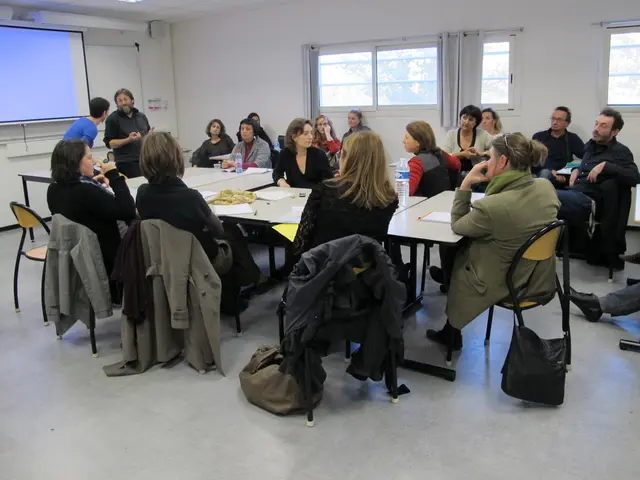Creating Inclusive and Culturally Diverse Educational Environments
Exploring the Advantages, Obstacles, and Triumphs in Education through Multicultural Perspectives
In today's diverse world, the importance of fostering inclusive educational environments cannot be overstated. These programs aim to celebrate and respect the unique contributions of every student, promoting a sense of belonging and cultural awareness.
Embracing Multicultural Content
Educators play a crucial role in this endeavour. By incorporating multicultural content into the curriculum, they can reflect diverse perspectives and experiences in lesson plans, textbooks, and teaching materials. This approach not only engages students but also broadens their understanding of the world. Using diverse texts, literature, and media, as well as cultural videos and documentaries, can help students appreciate global traditions and cultural experiences.
Celebrating Cultural Differences
Celebrating cultural holidays and traditions is another effective strategy. Organising events where students can share their cultural holidays, foods, music, and stories fosters inclusivity and mutual respect. Encouraging participation in cultural activities strengthens classroom bonds and builds a diverse community.
Promoting Open Dialogue
Promoting open dialogue about diversity is essential. Creating a safe space for students to share their experiences and learn about different cultures helps students develop empathy, address misconceptions, and build connections. Facilitating discussions that encourage students to share their cultural backgrounds can lead to a deeper understanding and appreciation of diversity.
Student-Centered Learning
Promoting student-centered learning is another key strategy. Encouraging students to take ownership of their learning through culturally relevant activities fosters a sense of belonging and promotes mutual respect and understanding. Fostering student collaboration also encourages the exchange of ideas and promotes a diverse community.
Respecting Cultural Heritage
Respecting cultural heritage is paramount. Correctly pronouncing students' names shows respect and builds trust. Recognising students' cultural strengths and incorporating them into learning experiences enhances engagement and belonging.
Inclusive Teaching Approaches
Adopting inclusive teaching approaches, such as culturally responsive teaching, can significantly enhance student engagement and belonging. Implementing buddy programs promotes inclusion and support among diverse students.
Prioritising Inclusive Learning Environments
Creating environments that value students' identities and cultures promotes a sense of belonging. Addressing equity barriers and working to eliminate them enhances student engagement.
Cultural diversity in education equips students with cross-cultural competence and the ability to work effectively with people from diverse backgrounds. A culturally diverse learning environment offers numerous benefits beyond academic achievement, including a rich and inclusive learning experience, preparation for the globalized world, and promotion of empathy, tolerance, and respect.
Successful multicultural education programs promote empathy, tolerance, and respect among students. Providing ongoing professional development for educators, focusing on cultural competence and inclusive teaching practices, is crucial for their success. These programs can create a supportive and inclusive learning environment where students feel valued and appreciated.
However, differences in communication styles, values, and beliefs can lead to conflicts among students in a culturally diverse learning environment. Encouraging group work in diverse settings, fostering collaboration and the exchange of ideas among students, can help mitigate these challenges. Successful programs often incorporate interactive activities, guest speakers, and cultural celebrations into their curriculum.
In conclusion, promoting cultural diversity and inclusivity in educational environments is crucial for creating a respectful and engaging learning space. The strategies outlined above can help educators create an inclusive and culturally diverse educational environment that supports the academic success and well-being of all students.
- Embracing global traditions and cultural experiences in education-and-self-development materials, such as reading diverse texts, literature, and social-media content, plays a significant role in broadening students' understanding of the world.
- A culturally diverse educational lifestyle fosters empathy, tolerance, and respect, equipping students with cross-cultural competence essential for success in the globalized entertainment industry.
- Collaborative learning through student engagement in culturally relevant activities, groups, and social media platforms can help address misconceptions, promote mutual respect, and create a more inclusive and culturally diverse environment.




